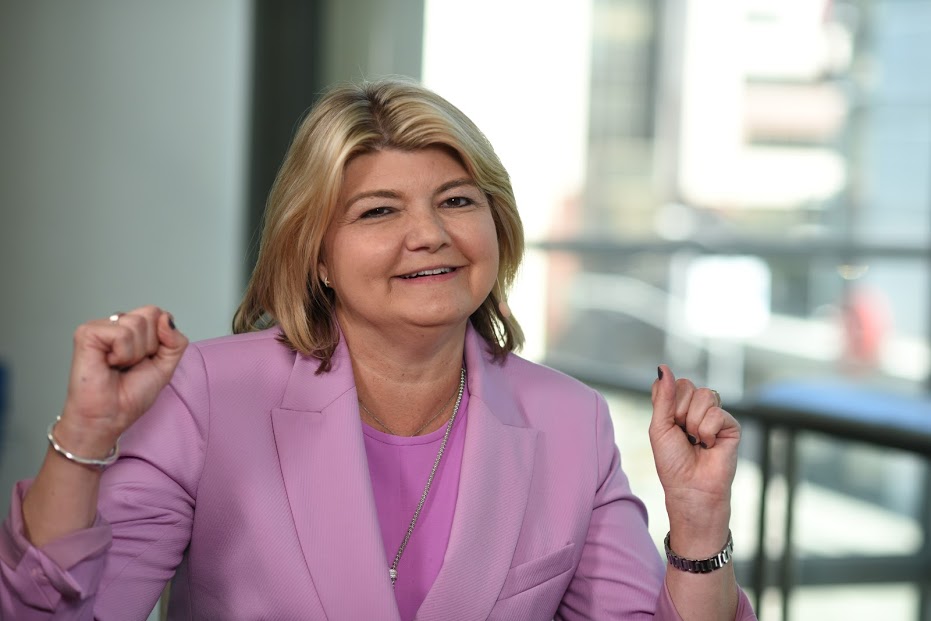 WOMEN IN TECH
WOMEN IN TECH
 WOMEN IN TECH
WOMEN IN TECH
 WOMEN IN TECH
WOMEN IN TECH
There is an old adage in computer science: “Garbage in; garbage out.” This statement is more relevant today than ever before, as artificial intelligence, bots and machine learning technology advance through the enterprise. Referring to the term learned from her father, Sandy Carter (pictured), chief executive officer at Silicon Blitz, explained the rationale for diversity in technology.
“If you think about artificial intelligence, machine learning and bots, you have to train the computer. It is not naturally smart. And there’s a team that actually uses a corpus of knowledge and trains the bot. If the data that goes in is biased, then the output is biased,” said Carter.
Meeting up with Jeff Frick (@JeffFrick), host of theCUBE, SiliconANGLE Media’s mobile live streaming studio, at the Professional BusinessWomen of California Conference in San Francisco, California, Carter discussed the role diversity would play in training machines to act appropriately. (*Disclosure below.)
This week, Sandy Carter is spotlighted in theCUBE’s Women in Tech feature.
Fresh out of a Leadership Summit that included 75 C-suite women from several companies, such as Chevron, Clorox, IBM, Microsoft, Intel, Amazon, LinkedIn, Salesforce, Airbnb and many more, Carter discussed that the Summit included three TED talks about hot topics that are actionable for companies.
There were a few areas of focus for the session. One subject centered around the inclusion of Millennials in the workforce. Carter cited that Millennials will comprise 50 percent of the workforce by 2020, so the group considered what a Millennial program could include.
The second area of interest was about how to link diversity to innovation to achieve better business outcomes. According to Carter, a 2016 Harvard article found that diverse teams are more innovative. The article reported that one of the best ways for companies to grow through transformation and innovation of their products and services was to hire more women and culturally diverse teams. Referencing various statistical models, evidence showed that companies employing more women “were more likely to introduce radical new innovations into the market over a two-year period” and that increased cultural diversity created a windfall of innovation.
The third topic was a discussion about diversity and inclusion in the next century. “We saw some facts about what’s going on in changes in population, changes in diversity and then how we as companies should manage programs to tap into those changes,” she said. Inclusion and diversity are not interchangeable issues, because if there is no inclusion, all efforts to be diverse will backfire and fewer ideas with market potential make it to market, she added.
As an example, Carter spoke about a case involving VR headsets and how they cause nausea for some people. A group of men began tweaking it with artificial intelligence to limit the effect. The result was improved nauseousness in men but not in women.
“You want your product to [work] for 100 percent of the world. We talked to a doctor yesterday, and there are apparent differences in motion sickness between men and women. If you only have one set of data, you don’t have the other,” said Carter.
She is adamant that for AI and bots to be intelligent, there must be diversity in teams. “If you don’t have a diverse team, you will not get the right answer from a bot … your data has got to be unbiased,” she said.
There are three actionable items companies can begin tomorrow, according to Carter. She suggested companies have a diverse team that represents a diversity of thought. Additionally, a diverse team also needs to be inclusive and offer great projects. Lastly, she advised to test and ensure that whatever is delivered represents that cognitive diversity. That includes differences in perspective or information processing styles.
Watch the complete video interview below, and be sure to check out more of SiliconANGLE’s and theCUBE’s independent editorial coverage of the PBWC Conference. (* Disclosure: Some segments on SiliconANGLE Media’s theCUBE are sponsored. Sponsors have no editorial control over content on theCUBE or SiliconANGLE.)
THANK YOU